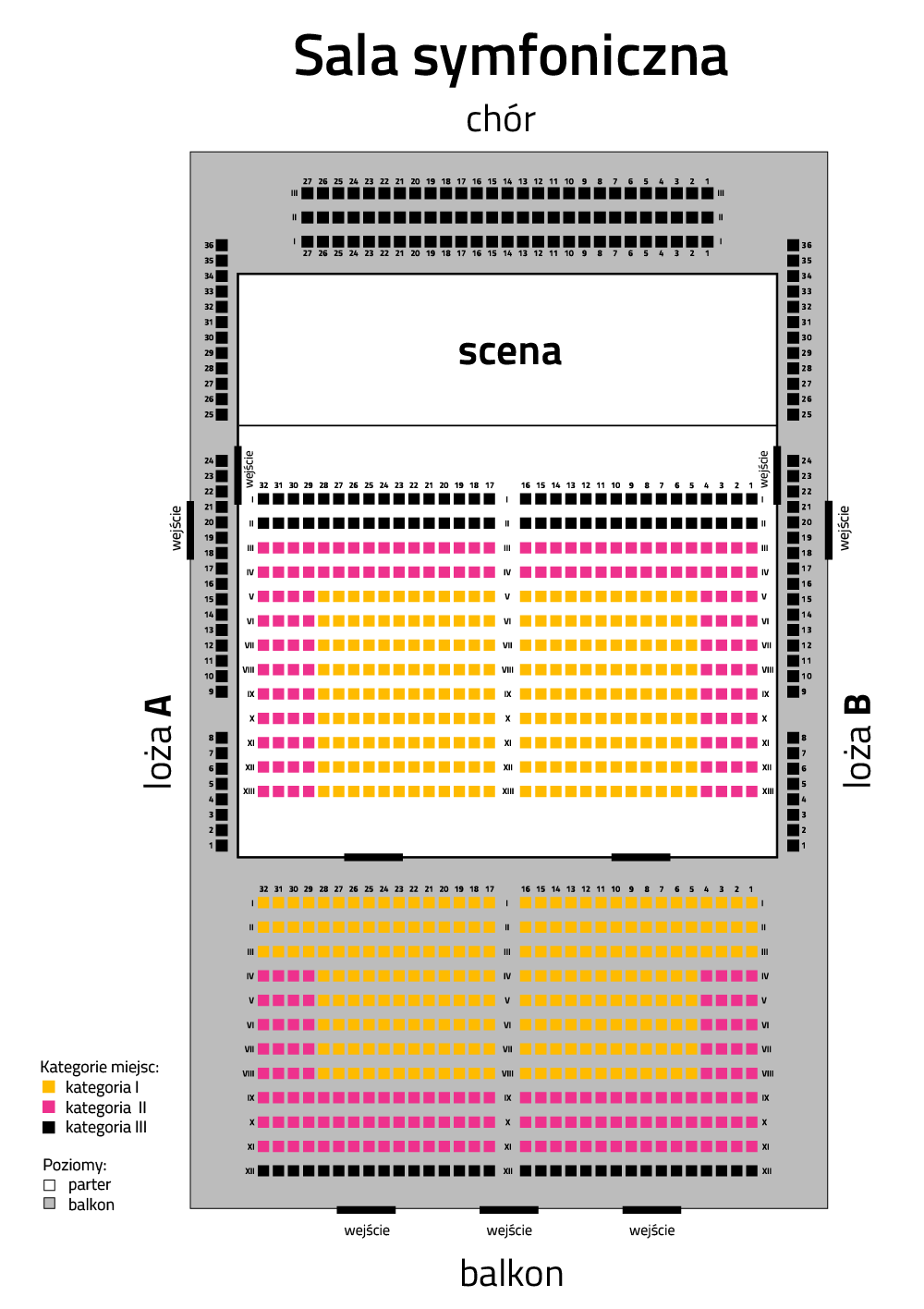This time the Golden Hall at the Philharmonic in Szczecin will be filled with sounds to make the Warsaw Autumn (Warszawska Jesień) look like a review of children's songs, al thanks to the works of Armenian composers who tell the tragic story of their country, both with artistic and barbaric language. It is a concert for those who have strong nerves. It is recommended to read the notes below before attending...
An earthquake will be initiated by Avet Terterian’s Symphony No. 3 (1929-1994). The Armenian composer (actually Alfred Rubenowitsch Terterjan) was educated at the Baku Higher School of Music, to next undertake studies at the Conservatory in Yerevan (1952). He played a key role in the musical life of Armenia, performing a number of functions: secretary and later vice president of the Armenian Composers' Union, and also the department of music at the Ministry of Culture. However, his music often raised a stir in so-called “official circles”. This was the case with Symphony No.3, when the premiere sparked a scandal. The composition has a four-part structure, but the composer consistently avoids classical music development. It is actually a series of extremely colorful illustrations showing the landscapes of Armenia. Baroque drum rhythms, block application of brass instruments, oriental bourdon sounds, tones of the duduk (Armenian instrument with a double reed), and horns imitating antique trumpet sounds as if from above, as if from Ararat; The "roar" of brass instruments falls on the audience like an apocalyptic prophecy. Musically there is no development here, but the illustrative power of this composition is better than Blu-ray, HD and 4K technologies combined.
Terterian’s symphony is perhaps just a collection of mystical, barbaric or even apocalyptic visions. Taking into account, however, the tragic history of the Armenian people, it is difficult to break the composer's work from the context of the events at the turn of the 19th and 20th centuries. The composition "Shushanik" by Edward Mirzoyan (1921-2012) refers directly to those events. He was a Georgian composer who earned his musical education at the conservatory in Yerevan, and then went on to study in Moscow.
He was a member of the Armenian Composers' Union. "Shushanik" (holy name in Armenian and Georgian culture) is a piece dedicated to the massacre of Armenian people which took place during the occupation of Western Armenia by the Ottoman Empire. Purges and acts of genocide took place in these areas as early as the 1890s. However, a massacre of unprecedented proportions began with the Turkish government's decree issued on April 24, 1915, ordering the arrest of Armenian intelligence. In fact, mass extermination began, during which about 1.5 million Armenians (1915-1918) died. At the time of the genocide, Western states had repeatedly called on the Turkish government, but did nothing to prevent the bloody events. April 24 is therefore a particularly significant date in the history of Armenia. On this day, concerts are organized where compositions by Armenian artists are performed (e.g. "Shushanik") to show the richness of the culture that people once wanted annihilated.
Friday's concert will feature works by the most famous Armenian artist Aram Chaczaturian. "Concerto-Rhapsody for cello and orchestra" is a composition created in the 1960's for the legendary Russian cellist Mstislav Rostropovich. And it is no wonder as the piece requires not only perfect technical ability, but also great concentration in expressing the depth of the music, as in the beginning of the work, for example, the cellist must also have a specific level of improvisation. These features will probably be given in the interpretation by Armenian cellist Nareka Hakhnazaryana (born 1988), winner of the gold medal at the Peter Tchaikovsky International Contest in Moscow. The next two fragments come from the leading stage composition by Chaczaturian, namely the ballet "Spartacus". The popularity of the work caused the composer to choose the best fragments and to create four symphonic suites. "Eghina variations & Bacchanalia" or Variations of Eghina refer to the beginning of the ballet when the wild orgy and Bacchanalia take place in Crassus’s palace (earlier Spartacus and his wife Phrygia had been captured). In turn "Adagio of Spartacus & Phrygia" is a musical illustration of the merging of Spartacus’ and Phrygia’s hearts just after their escape from the Crassus yoke. The Chaczaturian part of the concert will culminate with the spectacular "Sabre Dance" from the ballet "Gayane", coming from the finale of the ballet when the dancers show off their skills in swordsmanship (the middle part is based on an Armenian folk melody). The work of Aram Chaczaturian made Armenian music famous in the world. The composer seems to look into the future as far as his worldview and music are concerned. . And so today it is said in Armenia: "You always have to think about the future, yet remember ...".
------------------------------
Mikołaj Rykowski PhD
Musicologist and clarinetist, doctorate, and associate at the Department Music Theory at the Paderewski Academy of Music in Poznań. Author of a book and numerous articles devoted to the phenomenon of Harmoniemusik – the 18th-century practice of brass bands. Co-author of the scripts "Speaking concerts" and author of the spoken introductions to philharmonic concerts in Szczecin, Poznań, Bydgoszcz and Łódź.



